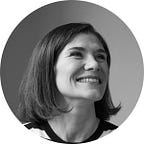The future belongs to the creators, says world-renowned memory coach Jim Kwik. I agree with him. The OECD The Future of Education and Skills 2030 project identifies creativity as one of the key competencies for learning and innovation to prepare for the 2030 labor market. In an increasingly automated world, more and more innovation, creative problem solving, and imagination are needed. But those things are something that machines do not have. Creativity is every person’s superpower to train. It is not a thing in itself but arises in the course of action. So, creativity is something we do. It is possible in every area of life and can be developed. Creativity is rather the result of many factors, it is a process. Different authors treat creativity differently, but again quite similar. Jim Kwik says that you don’t have creativity, you do creativity. Educational innovators Robinson and Aronica (2015) talk about creativity as a process through which original and valuable ideas emerge. It involves imagination and innovation, ie the ability to generate new ideas and put them into practice. In the creative process, we can get somewhere we had no idea at first. It is a dynamic process that involves making connections, transcending discipline, and using metaphors and analogies (Robinson and Aronica, 2015). I also really like the approach by Estonian brain scientist Jaan Aru, who says that creativity is always based on concentration, and creativity means that we create new connections in the brain.
Jim Kwik proposes the acronym M.A.G.I.C. to make sense of creativity. I synthesize Jim’s thoughts with my own observations.
M- MINDSET
Notice how you think and how you talk to yourself. Many people say that they are not creative and thus embed this way of thinking. Start by assuring yourself that you can think and act creatively. Creativity is not something you are. Creativity is something you do. Second, be kind with yourself while taking acton. The big blockers of creativity are ORIGINALITY and PERFECTIONIONISM- the desire to be perfect and the fear of experimenting with already existing ideas. This is also why as an adult our creativity is locked — we are very critical of ourselves and our skills.
A- ASK
Ask new questions to get new answers. The question is the answer. Since creativity is the creation of a new from an existing one, ask yourself, for example:
- what things could be put together to create something new that does not yet exist?
- how to work with your team to bring out more creativity?
- how to teach something in a whole new way?
- how do I want people to feel?
etc
G- GOALS
Set yourself creative goals and use your creativity to reach them. What are your goals to be more creative? A good goal is both logical and emotional. The goal starts in your head, moves into your heart, and then into action.
Write down your creative goals so that you can make them visible. Handwriting gives them even more power. When you use creativity, such as a vision board, you influence your subconscious to achieve these goals. When you have reached the goal, move it to your gratitude board.
I- IMAGINATION
Creativity is imagination in action. Knowledge is what is, but imagination is what could be. Once your imagination is working, use your knowledge to create new answers.
C- CARE
Your very first creativity tool is your brain. Take care of it.
The term “creative thinking” is also increasingly used, which essentially means thinking aimed at finding new solutions. In other words, it is a practical way to be more creative and to bring creativity out of yourself. Creative thinking is important in every area of life, it helps to reach better solutions. Lisa Nichols outlines very simple practical steps for creative thinking that I synthesize with my own thoughts and relate to visual facilitation:
- Creativity is not linear, it comes to us in very different places and moments. Creativity wants time. Take the time to let creativity develop. A walk on the beach or in the woods. Write down these random thoughts. All ideas. And then sit down and work with the ideas, start creating something from them.
- Seek inspiration. Look at the people (look, not study) who inspire you. Who creatively inspires you. And then sit down and make your contribution.
When you make visual notes while listening to someone else or working with your thoughts, you play with ideas from different angles and give time to create. Create random mind maps, play with ideas, connect them. And then you start to systematize them and create a concrete action plan. By doing this visually, you will see the different points that need to be connected, synthesized, thought through to reach a result. - Always start with the end in mind. Visualize the end result. Do it in detail — feel, see, experience. And then think about how to get results, what are those different ways.
Creating a complete visual roadmap also helps here. When the final result is written on paper, it is much easier to map the current situation and important steps to the desired result.
Resources:
- Kwik, J. 5 Keys to Limitless Creativity.
https://jimkwik.com/kwik-brain-233-5-keys-to-limitless-creativity/ - Nichols, L. 3 Ways to Spark Creative Thinking.
https://www.youtube.com/watch?v=_whQ1X1xxWU - OECD (2018). The Future of Education and Skills. Education 2030.
http://www.oecd.org/education/2030/E2030%20Position%20Paper%20(05.04.2018).pdf - Robinson, K., Aronica, L. (2015) Creative Schools UK
- Ärm, T.(2017). Ajuteadlase Jaan Aru üheksa reeglit, kuidas aju võimekust tõsta. Postimees, 13.12.
https://tervis.postimees.ee/4341451/ajuteadlase-jaan-aru-uheksa-reeglit-kuidas-aju-voimekust-tosta
